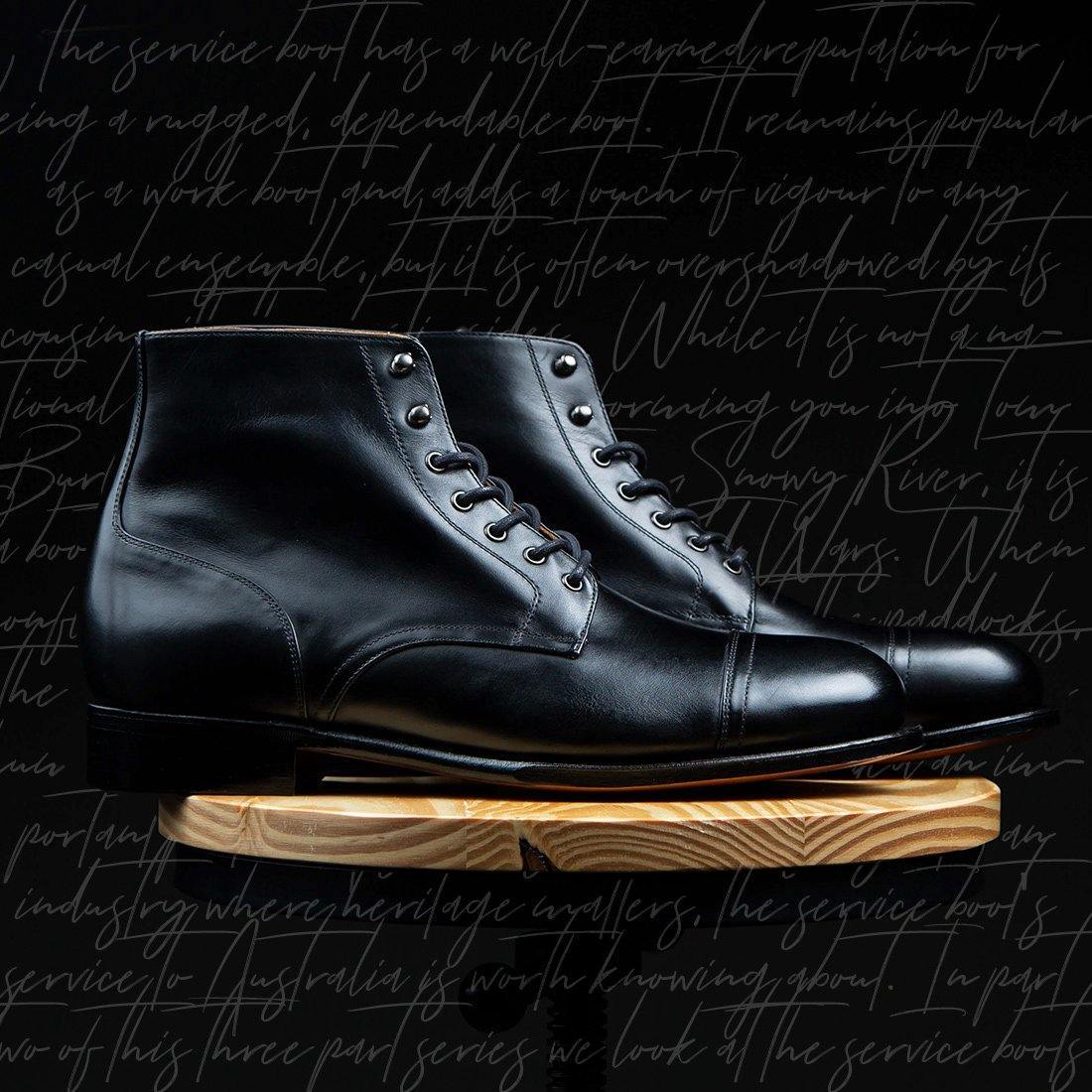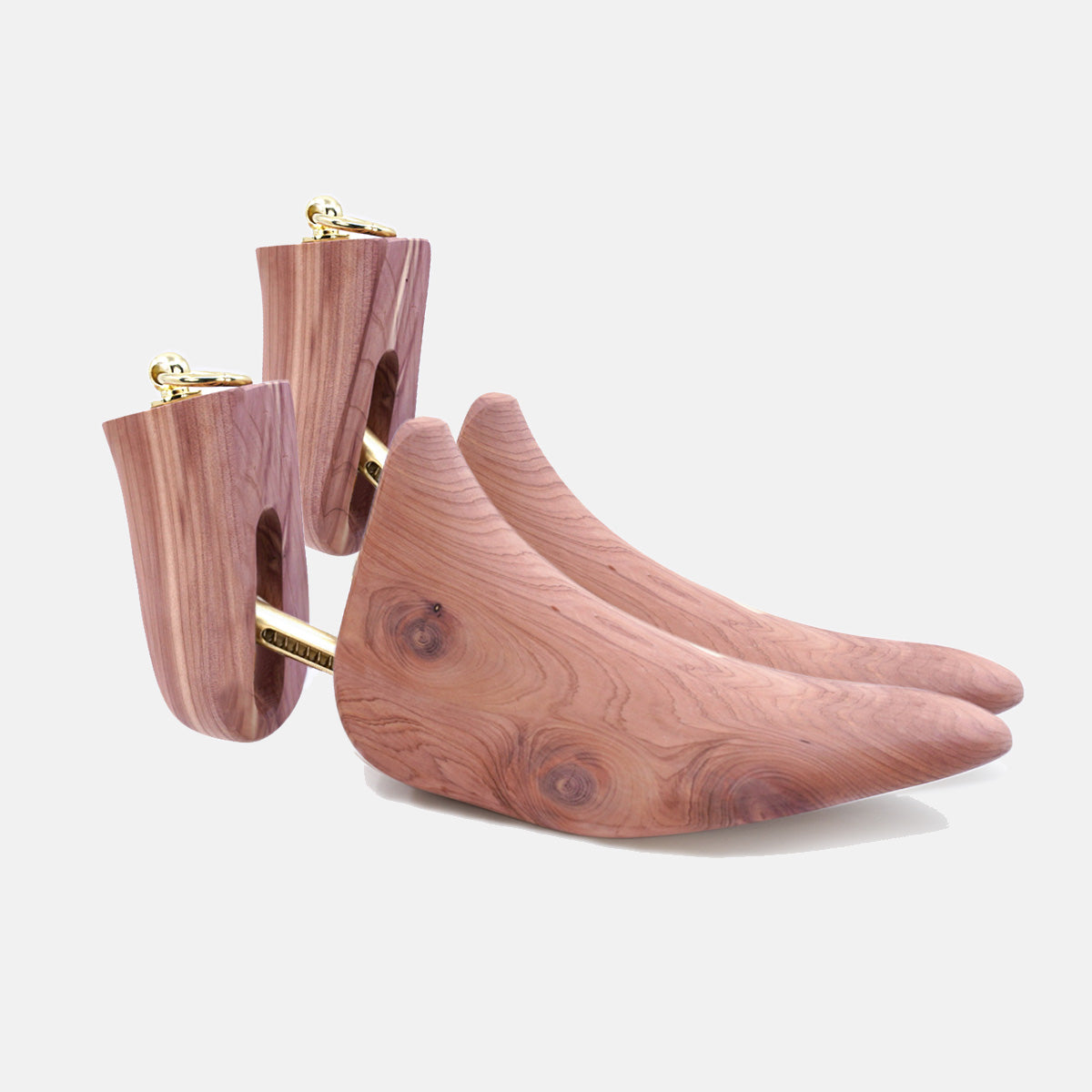Get 10% Off - Auto Applied At Checkout
Get 10% Off - Auto Applied At Checkout
Shoe Trees
shoe stretchers
Sets

The Australian Service Boot - An inspiring heritage (part II)
June 19, 2023 4 min read

Where mens boots are concerned, the service boot has a well-earned reputation for being a rugged, dependable boot. It remains popular as a work boot and adds a touch of vigour to any casual ensemble, but it is often overshadowed by its cousin with the elastic sides. While it is not a national icon, magically transforming you into Tom Burlingson in the Man From Snowy River, it is a boot that has fought in two World Wars. When conflict ended, it quietly went back into the paddocks, the sheds and the shoe racks across Australia.
The humble, unassuming service boot has played an important part in Australia's modern history. In an industry where heritage matters, the service boot's service to Australia is worth knowing about. In part two of this three part series we look at the service boots major modifications right up to its involvement in the defence of Australia in 1942.
1916 Pattern
By March 1916, the Australian Imperial Forces (A.I.F) had withdrawn from Gallipoli and began redeploying to France. The experience at Gallipoli and the approaching European winter required a rethink to the type of boot Australian soldiers would require on the Western Front.

The new 1916 service boots were outfitted with a thicker leather upper and leather sole. The leather sole was triple-layered and sewn, stitched and nailed together by a construction known then as the "Clinch Nail method", or Brass Nail Construction. The new boot also incorporated many of the modifications popular with front line troops at the time, such as toe cleats studded with hobnails and iron plates for the heels. It was more heavy and more rigid than the 1912 pattern, but these were acceptable sacrifices for its increased durability and efficiency for fighting in the winter.
 The 1916 service boot offered greater protection against the elements than the 1912 model, which soldiers suffered in during the Gallipoli winter. Photo @ AWM
The 1916 service boot offered greater protection against the elements than the 1912 model, which soldiers suffered in during the Gallipoli winter. Photo @ AWMDespite the improvements of the 1916 service boot, conditions in the Trenches where unlike anything the Anzacs experienced at Gallipoli.
The service boots could do little to protect the feet of men constantly submerged to the knees or ankles in muddy or water-logged trenches. The result for many Australian soldiers was "trench foot," rheumatism and/or frostbite.
 Despite the improvement, the sodden earth and the damp, wet trenches caused havoc amongst the troops and ushered in a new term, "trench foot". Photos @ AWM
Despite the improvement, the sodden earth and the damp, wet trenches caused havoc amongst the troops and ushered in a new term, "trench foot". Photos @ AWM
Soldiers did not blame the 1916 service boots for their poor foot health. The opposite, infact. The 1916 service boots were highly regarded. Australian infantry officers preferred to wear the 1916 service boots into battle, much to the confusion of British officers. A lost Tommy' could often be found wandering about the Australian lines, hoping to stumble upon a pair in his size.
1934 Pattern
By the start of World War Two a lot had been learned from the previous war. Common modifications made by soldiers in the first war were incorporated into production for the Second Australia Imperial Forces (A.I.F). The toe was reinforced. The cap-toe was introduced. Steal heel guards were attached. For the first time, the 1934 service boot consisted of variations that could be employed across battlefields, environments, and climates.
 The 1934 and 1940 service boots incorporated many of the lessons learned from WW1 and proved a reliable boot for the Second A.I.F. in WW2. Photo @ AWM
The 1934 and 1940 service boots incorporated many of the lessons learned from WW1 and proved a reliable boot for the Second A.I.F. in WW2. Photo @ AWM
The 1934 and 1940 Service Boots (the latter being made with more leather components to save on cost) were used throughout the war and in major battles that included North Africa, Greece, El Alamein, Singapore, and Malaysia. They fought across deserts, villages, and jungles and for all intents and purposes, the modifications made to the 1934 model were a success. Further modifications were required in the defence of Australia.
It was here that we learned about the desperate defence of the Kokoda Trail. When Singapore fell, 15,000 Australian troops were captured by the Japanese - that's about half the size of our current Army. A hastily formed militia was sent to Kokoda, the last stop before Australia. The 39th Battalion, a poorly trained, ill-equipped militia became Australia's last hope.
 Members of the 39th Battalion parade after weeks of intense fighting along the Kokoda trail. Photo @ AWM
Members of the 39th Battalion parade after weeks of intense fighting along the Kokoda trail. Photo @ AWM
For months the 39th Battalion defended Papua against the Japanese invasion. Equipment was in short supply and many wore boots from WW1, whose composite leather sole fell apart easily in the humid conditions. Troops fought up and down a sodden track that spread across 96km of harsh, jagged peaks clad in dense rain-soaked tropical jungle. They held off the Japanese long enough for the returning 7th Division to reinforce them and push the enemy off the island.

 Top: Professional soldiers resting Kokoda 1942. Photo @ University of Newcastle. Below: Three variations of the 1934/1940 Service Boots. Boot third from left clearly produced for the reinforcement troops sent to Kokoda. Photo @ Gary Traynor
Top: Professional soldiers resting Kokoda 1942. Photo @ University of Newcastle. Below: Three variations of the 1934/1940 Service Boots. Boot third from left clearly produced for the reinforcement troops sent to Kokoda. Photo @ Gary Traynor
Taking it all in
As productive as this exercise was, we had to remind ourselves that we were learning all of this amidst great sacrifice. Over 87,000 Australians - husbands, mothers, parents, children - did not come home from these two wars. The scale of their sacrifice is hard to imagine, especially for a country of our size back then.
Still, it was a very useful learning experience. We operate in an industry where heritage matters. Understanding the role the service boots played in our history, and how it changed over time, encouraged us to develop a service boot that honoured this proud legacy, one I hope that our customers will appreciate and whose story will inspire them as it did us.
~
In the final installment of this three-part series, we look at how this exercise influenced the development of our 2020 Collection. Read Part Three now!
Leave a comment
Comments will be approved before showing up.
Subscribe
Sign up to get the latest on sales, new releases and more …











